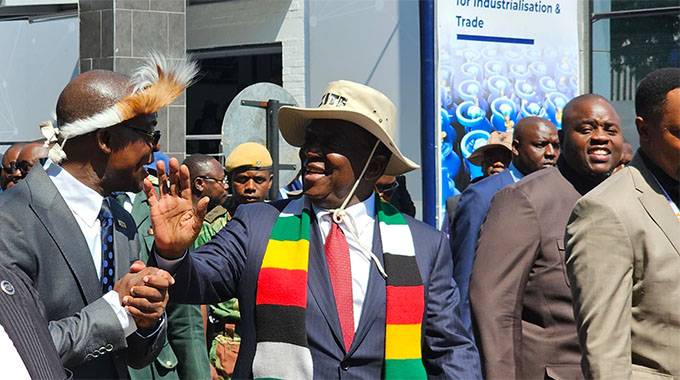Eskom to cut debt load to R200bn

Power utility Eskom hopes to achieve a debt balance of R200 billion, which is less than half its current debt burden of R450 billion, CEO Andre De Ruyter has said.
De Ruyter and other Eskom officials on Thursday briefed media on the state of the system. De Ruyter explained that Eskom is implementing a number of measures to reduce its debt burden, which includes cost cutting, raising tariffs through discussions with the National Energy Regulator of South Africa (Nersa) and the stabilisation of its balance sheet.
A timeline for achieving this target could not yet be confirmed.
Last year (SA) President Cyril Ramaphosa announced that Eskom would be restructured into three entities, namely generation, distribution and transmission. The restructuring will also be instrumental in Eskom reducing its debt burden.
“Each of our revenue generating divisions will be apportioned some share of debt. It can’t all stay with generation, where most of all the debt was incurred through the construction of Medupi and Kusile (power stations),” said De Ruyter.
The boards of the entities are currently engaging on apportioning the debt and understanding the balance sheets of each division.
Peter Attard Montalto, head of capital markets research at Intellidex, however said that the apportioning of debt is just a “paper exercise”.
He is not convinced the target set by the power utility to reduce debt has changed anything.
“The R250 billion reduction is still the same figure as in the past, but with the Chief Restructuring Officer process having been a waste of time and National Treasury sitting on their hands, it will take the Department of Public Enterprise to force the process forward with a special purpose vehicle or a swap to South African Government Bonds,” he said. A move like this could only be expected some time next year.
Lender concerns
Eskom is aware of the concerns’ lenders might have about how the security of their assets would be impacted through the restructure, according to De Ruyter.
Part of the engagements involve understanding how these loan agreements will be impacted.
“As we develop the business model and financing model and structure the balance sheet, we will engage with lenders. Some discussions have started,” he said.
De Ruyter assured that lenders were being appraised on progress made and that they were not being left behind on the journey as it is important for Eskom to ensure it does not default on agreements.
“We fully understand that will be highly undesirable,” he added.
Eskom management is also engaging with senior officials of the World Bank on the terms of its $3,25 billion loan received in 2010, partly used for the construction of Medupi, Bloomberg previously reported.
The terms require Eskom install equipment, which would cost R42 billion, in the plant to reduce emissions of sulphur dioxide.
De Ruyter confirmed that Eskom would be engaging with the World Bank next week.
He said the discussions with the World Bank so far have been “open and constructive”.
“We are continuously clarifying and exploring to make sure we remain aligned and committed on the various terms of agreements entered into,” he said.
Eskom did not provide an update on financial performance for the year, as these are yet to be finalised.
De Ruyter however pointed out that Eskom expects to be profitable at an operating profit level. But once debt servicing costs have to be taken into account, the utility will record a loss.
The CEO previously told members of Parliament that the lockdown had impacted the power utility’s sales levels. Eskom estimated a loss of R2.5 billion in cash generation.
Deputy Public Enterprises Minister Phumulo Masualle told members of Parliament on Wednesday that the power utility’s financial position had worsened due to the impact of the Covid-19 pandemic, particularly in its efforts to raise revenue with businesses having to close operations, Fin24 previously reported.
Another obstacle to Eskom’s revenue generating ability is linked to the tariffs Nersa allows it to charge.
Eskom and the energy regulator are caught in legal battles, whereby the utility is challenging some of the tariffs which have arguably been too low for Eskom to cover costs.
But De Ruyter said he recently met with Nersa’s newly appointed electricity regulator Nhlanhla Gumede, and that they had “positive first engagement”.
“Clearly we have differences that need to be resolved, and this will take time,” De Ruyter said. Eskom will meet with Gumede this week, and has invited him to visit power stations and the system operator.
“We are working on rebuilding a relationship and so far we are making very satisfactory progress,” he said.
De Ruyter said that Eskom noted the most recent decision by Nersa to grant it a R13,3 billion claw-back tariff, short of its R27,3 billion application. Eskom will also be engaging with Nersa on this, before making a decision on whether it will be challenged or not.
Load shedding
Being able to generate revenue also requires that Eskom avoid load shedding, De Ruyter said. Eskom estimates three days of load shedding at stage one over winter.
Chief Operating Officer Jan Oberholzer stressed that the risk of load shedding would remain till August 2021 given the unpredictability and unreliability of the system.
Eskom was able to implement short-term maintenance over lockdown, which allowed for some improvements.
However, long-term maintenance, required to address the sustainability and reliability of units has not yet been implemented. Oberholzer said this long-term maintenance is scheduled to kick off from July 1.
“I can’t make it clear enough. The risk (of load shedding) will remain because of neglect over the last decade, it will remain until we do proper maintenance,” said Oberholzer. — fin24.m









Comments